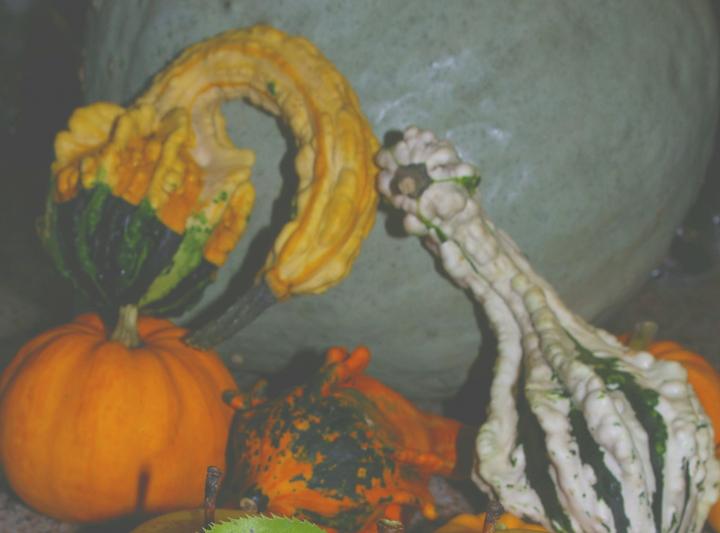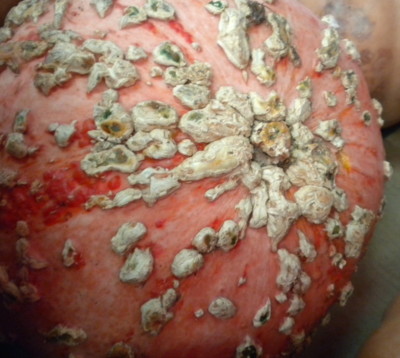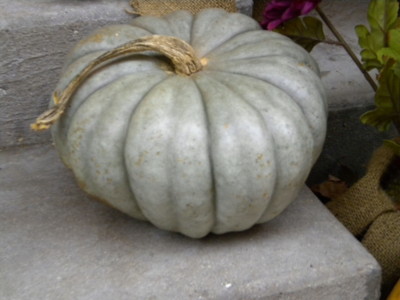






Colorful pumpkins, squash and warty gourds are as much a part of Thanksgiving as the turkey.
Doreen G. HowardThis Thanksgiving, display some unusual pumpkin and squash varieties.
Have you seen those warty pumpkins and gourds at farmers markets, orchards and garden centers?
The ones with growths that look like big zits or peanuts? I first saw ‘Knuckle Head’, a slightly warty orange pumpkin, last year at a local orchard that also sells pumpkins, gourds and corn shocks. Of course, I bought it, along with a half dozen bumpy gourds.
(However, I also quickly discovered that the pumpkin and gourds were genetically altered and patented by Siegers Seed. Saved seeds don’t come true, unfortunately.)
See the photo below. What do you think? Yes, this is the way it’s supposed to look!

During my vacation travels last month, I found a pink pumpkin that was wallpapered with huge peanuts! Not really. The growths or warts strongly resemble the shape and color of peanuts. It’s a 220-year-old heirloom, ‘Galeux d’Eysines’ from France.
‘Galeux d’Eysines’ is often called the peanut pumpkin for obvious reasons. The flesh makes tasty pies and other goodies.
The warts are created by the build-up of excess sugars in the flesh. In other words, the more peanuts, the tastier the flesh is. Needless-to-say, I’m making pumpkin bread, cheesecake and pie from it. And, I’m saving the seeds to grow next year.
Another heirloom pumpkin I love is muted blue-gray Jarrahdale from Australia. It’s ribbed and changes colors, from blue to musty peach, as it ages. The flesh is bright orange, dry and sweet. I’ve grown it for years, because it stores well and for its ghostly color.

I display pumpkins and other colorful winter squash from Halloween through Thanksgiving. Our Pilgrim forefathers subsisted on these edibles during their harsh winters, thanks to the Narragansett Indians who gave them seeds, growing advice and easy recipes.
The Pilgrims had gone hungry their first winter, turning up noses at the long-storing foods like pumpkin and squash. When summer came, the colonists planted the seeds given to them by their Native American neighbors. That’s why I pick my pumpkins carefully so that they enhance my Thanksgiving decorations and stay edible for future use.
By the way, the first Thanksgiving dinner really did include pumpkin pie! Pilgrim cooks hollowed out small pumpkins, filled them with sliced apples, sugar, spices and milk. After placing the stem cap back on the pumpkins, they were buried in hot ashes of the cooking fire and baked until tender.
See classic Thanksgiving recipes, including pumpkin pie!
See how to clean and cook pumpkin.
See how to grow your own pumpkins.
~ By Doreen G. HowardGet inspired by Robin Sweetser's backyard gardening tips. Robin has been a contributor to The Old Farmer's Almanac and the All-Seasons Garden Guide for many years. She and her partner Tom have a small greenhouse business and also sell plants, cut flowers, and vegetables at their local Farmer's Market.
Copyright © www.100flowers.win Botanic Garden All Rights Reserved